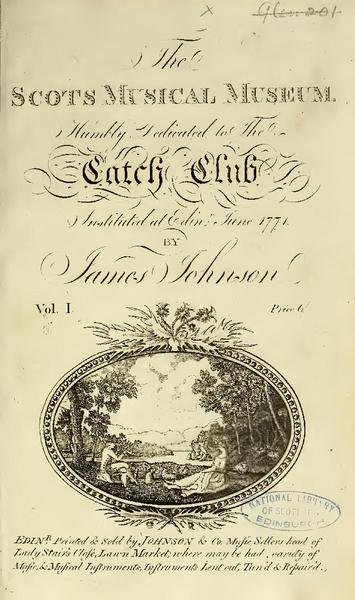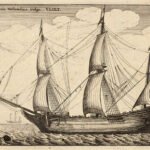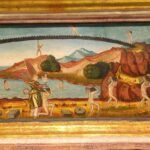25 January is Burns Night, when many people both in Scotland and further afield celebrate the life of the poet and songwriter Robert Burns (1759 – 1796). It’s traditional to recite Burns’ poem Address to a Haggis, to eat haggis, to drink a succession of toasts, and to sing Auld Lang Syne. For those of you who don’t know what all the fuss is about, this post is a brief introduction to Robert Burns, and to the choral versions of his songs that Canasg publishes.
Burns is a very important figure in Scottish song. Many of the songs we think of as ‘traditional Scottish’ were written, or adapted from existing folk songs, by Robert Burns. For example, many individual phrases from the lyrics of My Love is Like a Red, Red Rose and Auld Lang Syne can be found in earlier traditional songs – but it’s Burns who crafted the versions that we know today.
Burns had an interest in writing poetry from a young age, and his first major success was in fact as a poet, when his Poems, Chiefly in the Scottish Dialect was published in 1786. The acclaim he received for this book encouraged him to make a trip to Edinburgh (from rural southwest Scotland, where he had grown up in a poor but educated farming family). In Edinburgh he met James Johnson, one of several publishers who were dedicated to publishing collections of Scottish tunes and songs.
Burns became deeply involved in the enterprise of collecting – and also of creating – Scottish songs. He wrote new lyrics for old tunes, adapted old lyrics, tweaked and arranged old tunes, and made new pairings of tunes and words. Of the six hundred songs published by Johnson in six volumes of the Scots Musical Museum, two hundred were by Burns. He also collaborated with George Thomson, publisher of the five volumes of A Select Collection of Original Scottish Airs for the Voice, though his relationship with Thomson was more prickly.

Many of the songs continued to morph after their original publication. For example, the tune to which A Red, Red Rose is most commonly sung today (Low Down in the Broom) wasn’t paired with Burns’ lyrics until 1821. When the song was published in 1797, in volume 5 of The Scots Musical Museum, it used a different, though similar, tune called Major Graham. You’ll also find variants of the tune for Auld Lang Syne, though in this case the version published by Johnson used the same tune as we sing today.
Canasg publishes over 20 choral arrangements of songs by Robert Burns. I hope you will enjoy exploring them:
A Man’s a Man for A’ That (SAB) – Burns’ classic text (1795) about the worth of the poor man, arr. Frances Cockburn
Ae Fond Kiss (SATB) – a beautiful love song based on a real parting, arr. Frances Cockburn
Ae Fond Kiss (SSAA) – arr. Frances Cockburn
Auld Lang Syne (SATB) – the anthem of Hogmanay (New Year) and Burns Night, and a tribute to friendship, arr. Sheena Phillips
Ay Waukin, O (SATB) – a love song, arr. Sheena Phillips
Behold My Love, How Green the Groves (SSA, piano) – a paean to country life, arr. Brad Pierson
Cauld Blaws the Wind (SATB) – a little song about winter. Also known as Up in the Morning Early. Music by Sheena Phillips
Five Scottish Songs (SATB, piano) – a set of five concert arrangements by Canadian composer Alasdair MacLean. The songs (listed below) may be purchased individually:
- The winter it is past
- My heart’s in the Highlands
- How green the groves
- I’ll never leave you
- Where are the joys?
Go On, Sweet Bird (SATB) – a song about the comfort of birdsong. Music by Michael Buck
Green Grow the Rushes, O (SATB) – a song in praise of the lasses, arr. Jonathan Crehan
Lassie, Lie Near Me (TTBB) – another extolling the lasses, arr. Peter Hill
Let Me In This Ae Night (SSA) – pleading finds its satisfaction. Music by Frances Cockburn
Let Me In This Ae Night (TTB) – music by Frances Cockburn
My Love Is Like A Red, Red, Rose (SATB) – Burns’ beautiful love song, arr. Michael Buck
The Deil’s Awa’ wi the Exciseman (SATB) – a lively takedown of tax collectors, arr. Brad Pierson
The Winter It Is Past (SATB) – through-composed setting of Burns’ poem, by Sheena Phillips
Ye Banks and Braes o’ Bonnie Doon (SATB, soprano recorder) – love song, arr. Sheena Phillips
Note: the picture in the header is from the portrait of Burns by Alexander Nasmyth, 1787, which lives in the Scottish National Portrait Gallery.


